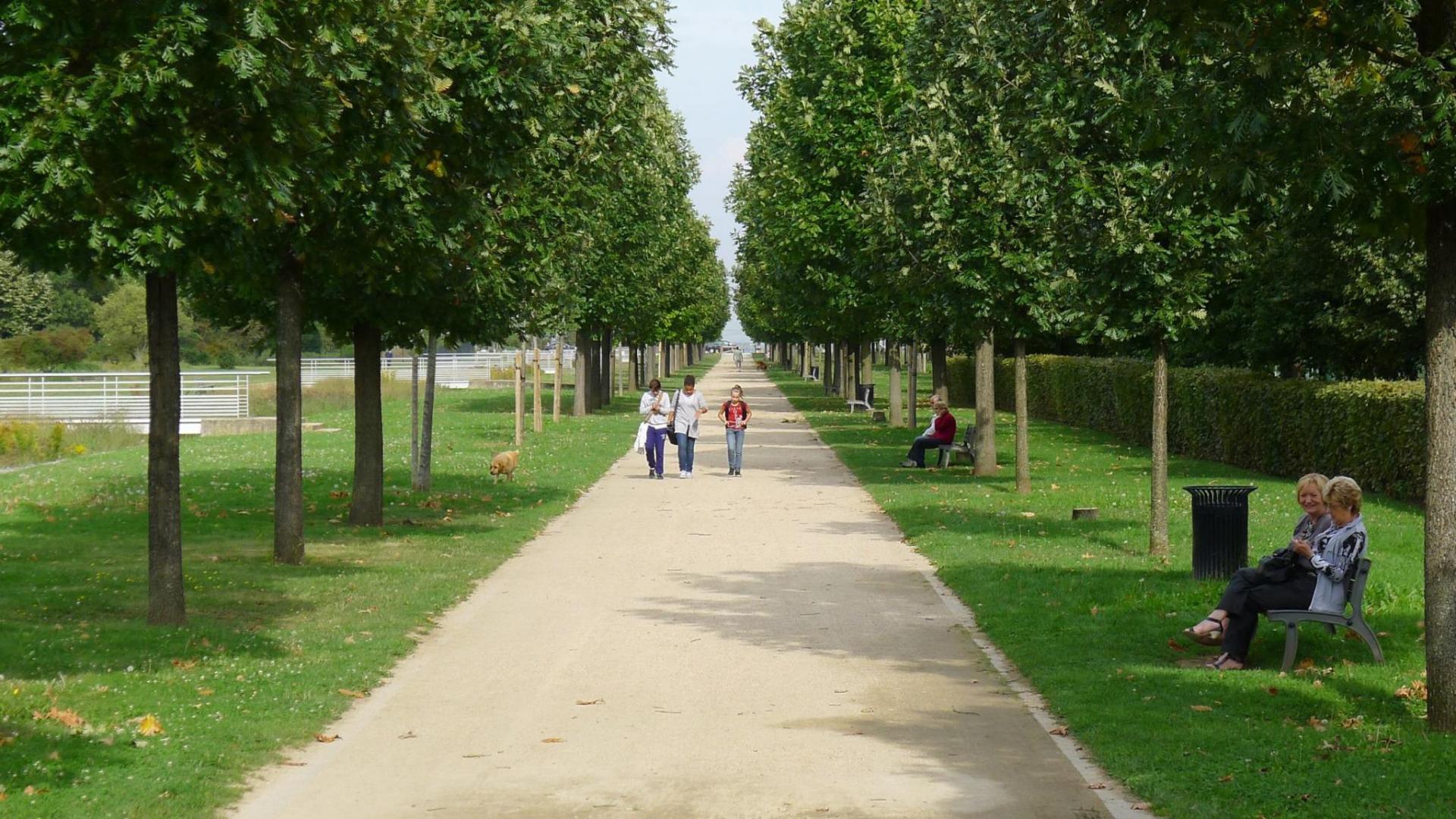
Parc des Lilas in Vitry-sur-Seine: Conseil général du Val-de-Marne, Direction des Espaces Verts et du Paysage
Parc des Lilas in Vitry-sur-Seine, is a large natural space 97 hectares featuring fields, orchards and meadows. The park is a former market gardening area and also includes cereal crops, community gardens and grazing plots. The area acquired its name through the former indoor production of lilac flowers. The Management system of the park features a small-scale mixture of horticultural enterprises, allotment gardens, community gardens and public green spaces.
From an Urban Agricultural perspective the park is particularly interesting as it showcases a rare diversity of bottom-up and commercial enterprises existing together on one large site. The design of the park has been actively progressed since the early 1990s. The concept is an interesting one which is considerably different from most formally planned urban greenspaces as there is no fixed final form for the park.
Instead, the design is considered to be a constantly evolving process. Under the principle "the park begins now", available areas are designed and quickly incorporated into the park. A main promenade, “le grand mail” has been created to provide a fixed element within an otherwise largely dynamic structure.
Traditional horticultural management has now been largely abandoned in favour of new low maintenance techniques, which have involved development of agricultural trial areas. Farm animals are also present in the park for educational purposes and there are some demonstration areas featuring roses and lilacs to showcase varieties that were historically grown in the park. However, park managers have deliberately avoided a museum type approach which preserves former land management activities. Despite this, horticultural businesses which have remained in the park have been supported, allowing them to continue their activities in the future.
Newly emerging forms of urban agriculture, based upon community engagement, have also become established in recent years. The local authority actively engages with several new community groups, which focus mainly upon organic production. These groups have been encouraged through open funding calls which provide resources to community stakeholder groups on the basis of delivering predefined objectives including recycling of green waste, reducing water consumption and promotion of biodiversity.
The concept of promoting traditional forms of agriculture within the park, has therefore developed considerably through promoting innovative practice and new forms of cultivation and marketing. In this respect, the park can be seen as a laboratory of future civic engagement in agriculture within the city.
Information sources:
Timpe, A (2017) Produktive Parks entwerfen : Geschichte und aktuelle Praxis biologischer Produktion in europäischen Parks. Dr – Ing Phd, RWTH, Aachen




